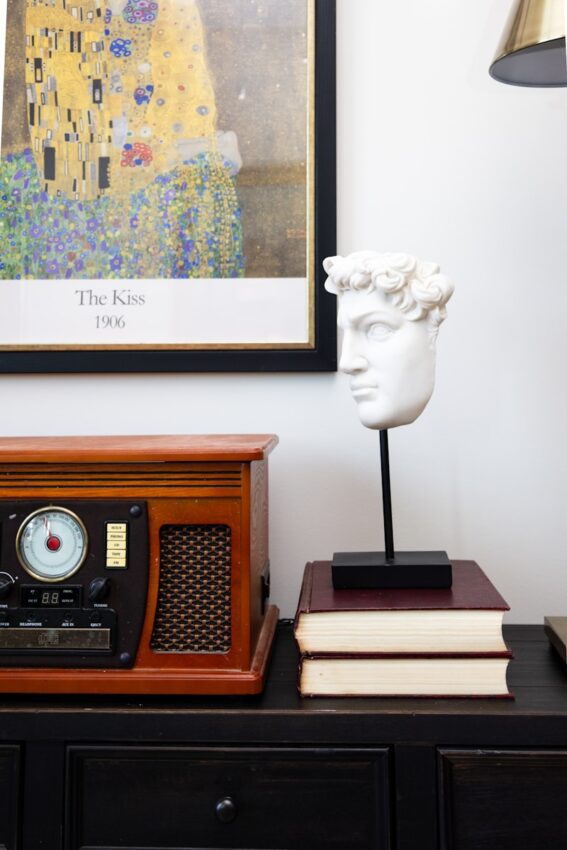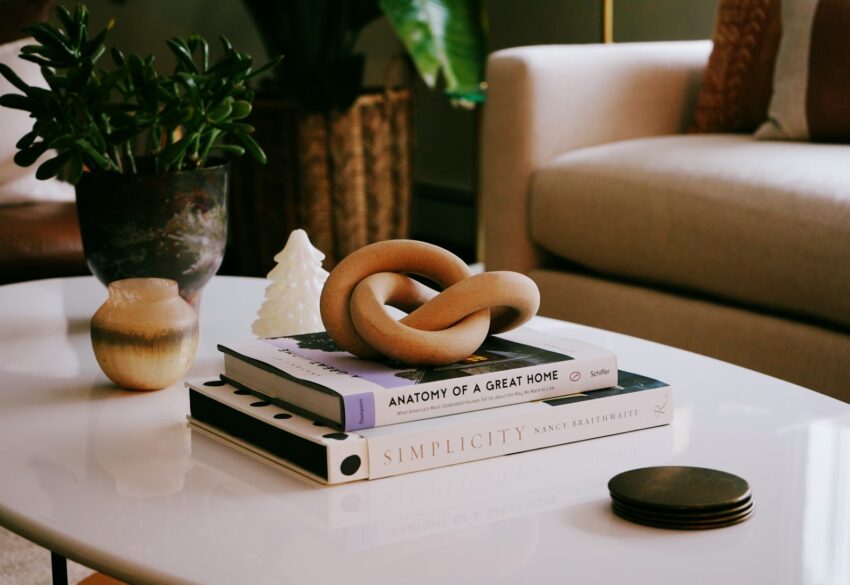If you don’t know how to decorate your house anymore, picking different styles of sculptures will elevate it considerably. While we usually view sculptures as gigantic depictions of gods and historic scenes, they’ve come to represent various concepts in smaller sizes, perfect for a lover of art living in an apartment.

Sculptures can also be found at affordable prices. You may stumble upon cute relief sculptures, identified by their two-dimensional background ― “The Horses of Anahita” by William Morris Hunt is an example of such a creation.
Another interesting form of sculpture is the assembled one, in which creators attempt to form different objects into a three-dimensional work of art. This format of sculpture strives away from aesthetic purposes, which is why some create them from found objects, different materials and textures, and even mixed media.
Regardless of the sculpture you bring home, you’ll need to know how to present it properly. Here are some guidelines to consider.

Consider the room size and traffic flow
Although decorating a room with sculptures is an amazing way to refine it, it’s best to avoid overcrowding it with art. Even if you found some interesting sculptures for sale and can’t bring yourself to buy less than a few pieces, be mindful of where you’ll place them.
Some sculptures might be made of sensitive materials, so if you place them in a room with considerable traffic flow, like the kitchen, you might risk breaking them in a moment of hurry. Some say sculptures are best placed at eye level, but you can change their location based on the layout of the room.
More sculptures are best in the living room or the bedroom but try to minimize them in the kitchen or bathroom. For an extra aesthetic view, place a plant next to the sculpture ― Snake plants and Spider plants are great at absorbing indoor moisture.

Have a color scheme
Whether you’re a fan of minimalism or maximalism, a color scheme or even a room layout will help you better pick and place sculptures. Since we’re talking about art, you might focus on contemporary art that goes hand in hand with minimalist interior design, which emphasizes the importance of organization and lack of clutter.
Regardless of the style, the color of the room dictates what sculptures would look best in it. A peachy pink room asks for bronze sculptures, regardless of their design. Muted greens are best for modern pieces ― but these are not the only options. Depending on their finishes, such as polished marble or rustic wood, you can introduce almost any sculpture into your house.
Create a group of sculptures
In interior design, the rule of grouping involves creating a focal point by placing several similar decorative items next to each other. This adds visual interest to a space and allows you to display your favorite sculptures without the visual clutter.
You could also group smaller sculptures with other items, such as books or a vase, to make the assembly more interesting. Grouping by height is a popular technique in which items are placed in descending height or by setting the tallest item in the middle and the shortest ones around it. If you’re not into highly organized decorations, consider an asymmetrical balance between the sculpture and other objects.
Groups of smaller sculptures and other decorative items can be created based on color, material, or functionality. Ideally, all objects should complement each other for a harmonious look, but a freestyle approach can be as visually efficient.
How to choose the right sculptures for you
Sculptures are everywhere if you have the time to search for them, and they can also be affordable if you look in the right places. If you’re not interested in investing in art for now or don’t have the financial means for a significant purchase, you can still enjoy their aesthetics and techniques by viewing them at local museums or exhibitions.
It is definitely worthwhile to support small creators who design unique sculptures that can also be personalised. In addition, if you’re lucky and the creator becomes an important figure in the future, you can pride yourself on having invested in their work early on.
Sculptures can also be made of various materials besides bronze and steel. If you want to achieve a more earthy vibe in your house or simply love special sculptures, look out for unique items created from glass, wood, and stone.
How to take care of your sculptures
While they seem unbreakable, statues can lose their shine in time. Maintenance is essential, even if it doesn’t require much. For example, regular cleaning is necessary, but you only need a soft cloth or brush, as well as mild soap and water, to clean them. Ideally, avoid any harsh chemicals, especially on materials like bronze or metals, because the material might be prone to marks or scratches.
Environmental factors are also important to consider when buying a sculpture. For example, wood sculptures are sensitive to moisture, so make sure you place them in a dry room or use a dehumidifier in your house to maintain their structure and look for longer.
Make sure you know about the sculpture’s material so you’re not directly damaging it unknowingly. For example, it’s best to wear latex gloves when handling a ceramic sculpture. Bronze sculptures placed in the sunlight or outdoors should be coated with protective wax that will strengthen them against humidity and moisture.
Experts advise that you shouldn’t handle or clean stoner sculptures too much and simply leave them be. Remember these tips to avoid accelerated deterioration, but always do thorough research before taking your sculpture at home.
Are you ready to expand your home sculpture collection?
Having sculptures at home is nothing out of the ordinary. Many people use them to decorate spaces and elevate the look of a room – they add an artistic feature to anyone’s home. With so many types of sculptures made of different materials, you can create the house of your dreams by placing them based on a color scheme or placing them in aesthetic groups. Do thorough maintenance of sculptures to avoid deterioration by cleaning them with a soft cloth and water and making sure moisture doesn’t affect them.
